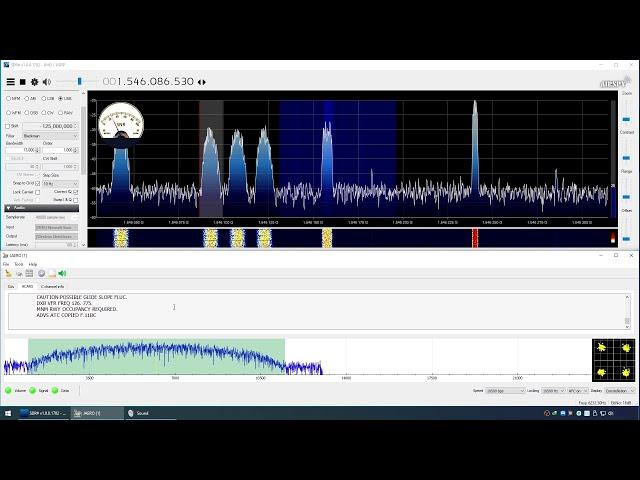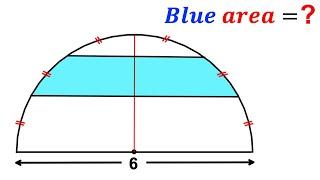
Taking a Look At Inmarsat-6 F1: The New Replacement Satellite For The Asia-Pacific Region
Recently I went hunting for the Thuraya 3 satellite on L-band, which is located at 98.5 degrees east. Much to my surprise, I couldn't find it because the satellite experienced a severe failure on orbit in April 2024 and has officially ceased providing satellite phone service. No more using Osmo-GMR for me anymore, as another L-band satellite bites the dust! To my knowledge, a replacement satellite for Thuraya 3 has not been planned or announced. The end of an era.
Inmarsat-4 F1 is another L-band satellite which is a favorite of us satellite enthusiasts here in the eastern hemisphere. Located at 143.5 degrees east, it is also reaching the end of it's usable life, with a highly publicized on-orbit failure occurring in the middle of 2023. This outage left the maritime and aviation industries of the Asia-Pacific region without communications for a considerable amount of time.
The replacement satellite Inmarsat-4 F1 is Inmarsat-6 F1, which was launched in late 2021, and begun commissioning in 2023. It is currently located to the west of Australia at 83.8 degrees east, which is very close to Thuraya 3. Inmarsat-6 F1's very strong signals actually leak into my satellite dish when it is aimed at Thuraya 3.
Join me in this video as I use my SDRPlay RSP1A to scroll through the portion of the L-band which is occupied by the new Inmarsat Asia-Pacific satellite. At the current time, there appears to be 600 and 10500 baud rate ACARS messaging channels and 8400 baud rate C-channel voice channels, to which both can be decoded with the software called JAERO.
There is also an analog FM voice transponder, the signals of which are very weak and hardly usable, in my opinion. You will also see that there are a number of wideband carrier signals being downlinked, these are believed to be Inmarsat's BGAN internet connectivity service. As of the recording of this video, maritime services such as "Inmarsat-C" (a two-way email/messaging service provided via satellite for ocean-going vessels) have not been commissioned on 6 F1 at this time.
At the beginning of the video, I display a picture of my L-band receiving setup. Most people will probably be wondering where I obtained my custom made left-handed circularly polarized helical antenna on my satellite dish. This was constructed by my good friend Ben in the US, who is a fellow Aussie that goes by the handle of 'thebaldgeek'. Ben has done a lot for the L-band satellite monitoring community and is a very knowledgeable and helpful dude.
He doesn't construct these antennas anymore and he is a very busy guy, so please don't email him requesting one of these. Mine is one of only three or four he ever produced, and it works remarkably well on my tiny 90 cm PayTV satellite dish. Massive signal-to-noise ratios can be observed throughout the duration of this video. I will detail the list of hardware at the bottom of the description section, should you wish to emulate my setup.
Thanks for watching!
HARDWARE:
- 90cm offset dish
- 'thebaldgeek' L-band LHCP helical feed
- Sysmocom L-band cavity filter
- Mini-Circuits ZRL-2400LN+ amplifier
- LCU-195 coaxial cable
- SDRPlay RSP1A
SOFTWARE:
- SDR Sharp 1702
- ExtIO front-end interface plugin
- JAERO 1.0.4.10
- VB Cable virtual audio cable
- Windows 10
Inmarsat-4 F1 is another L-band satellite which is a favorite of us satellite enthusiasts here in the eastern hemisphere. Located at 143.5 degrees east, it is also reaching the end of it's usable life, with a highly publicized on-orbit failure occurring in the middle of 2023. This outage left the maritime and aviation industries of the Asia-Pacific region without communications for a considerable amount of time.
The replacement satellite Inmarsat-4 F1 is Inmarsat-6 F1, which was launched in late 2021, and begun commissioning in 2023. It is currently located to the west of Australia at 83.8 degrees east, which is very close to Thuraya 3. Inmarsat-6 F1's very strong signals actually leak into my satellite dish when it is aimed at Thuraya 3.
Join me in this video as I use my SDRPlay RSP1A to scroll through the portion of the L-band which is occupied by the new Inmarsat Asia-Pacific satellite. At the current time, there appears to be 600 and 10500 baud rate ACARS messaging channels and 8400 baud rate C-channel voice channels, to which both can be decoded with the software called JAERO.
There is also an analog FM voice transponder, the signals of which are very weak and hardly usable, in my opinion. You will also see that there are a number of wideband carrier signals being downlinked, these are believed to be Inmarsat's BGAN internet connectivity service. As of the recording of this video, maritime services such as "Inmarsat-C" (a two-way email/messaging service provided via satellite for ocean-going vessels) have not been commissioned on 6 F1 at this time.
At the beginning of the video, I display a picture of my L-band receiving setup. Most people will probably be wondering where I obtained my custom made left-handed circularly polarized helical antenna on my satellite dish. This was constructed by my good friend Ben in the US, who is a fellow Aussie that goes by the handle of 'thebaldgeek'. Ben has done a lot for the L-band satellite monitoring community and is a very knowledgeable and helpful dude.
He doesn't construct these antennas anymore and he is a very busy guy, so please don't email him requesting one of these. Mine is one of only three or four he ever produced, and it works remarkably well on my tiny 90 cm PayTV satellite dish. Massive signal-to-noise ratios can be observed throughout the duration of this video. I will detail the list of hardware at the bottom of the description section, should you wish to emulate my setup.
Thanks for watching!
HARDWARE:
- 90cm offset dish
- 'thebaldgeek' L-band LHCP helical feed
- Sysmocom L-band cavity filter
- Mini-Circuits ZRL-2400LN+ amplifier
- LCU-195 coaxial cable
- SDRPlay RSP1A
SOFTWARE:
- SDR Sharp 1702
- ExtIO front-end interface plugin
- JAERO 1.0.4.10
- VB Cable virtual audio cable
- Windows 10
Тэги:
#inmarsat #4_f1 #6_f1 #l-band #jaero #sdrsharp #sdr_sharp #software_defined_radio #sdr #rsp1a #sdrplay #lhcp #satellite #dish #monitoring #decoding #sigint #signals_intelligence #lna #cavity_filter #ham_radio #amateur_radioКомментарии:
Apprentice first day on site
N Bundy Electrical
SECRET ROGUE (SPICY)
Savjz
FULL HIGHLIGHTS OF DENNIS SCHRODER | FIBA EuroBasket 2022
FIBA - The Basketball Channel
Dead Space Remake 2023 All Cutscenes Full Movie
WOOF Bandits
Tarjeta súper ELEGANTE con una simple CARTULINA
Pinky Manualidades
Hooligan ft. MINO of WINNER
Eun Ji-won - Topic
Já, padouch 4 (2024) CZ dabing nový HD trailer
Totalfilm.cz


























